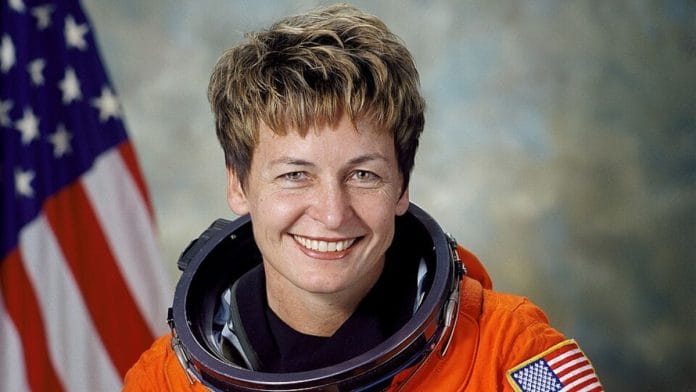Bengaluru: The Axiom-4 mission is just another feather in the cap of Commander Peggy Whitson—earned for her space travels—but this time, the American astronaut is also leading three new astronauts.
Peggy Whitson is commanding the private space mission led by Axiom Space to the International Space Station (ISS). She has Shubhanshu Shukla from India, Sławosz Uznański-Wiśniewski from Poland, and Tibor Kapu from Hungary with her.
“Everyone knows how much I like to fly. We have a lot of science here down below us, and we are looking forward to getting on board the International Space Station and getting underway,” Peggy Whitson said in a live interaction streamed by Axiom Space.
This is her fifth mission to the ISS. Only Russian astronaut Oleg Kononenko has been on the ISS as many times.
During the live stream, Peggy Whitson was keen on letting her fellow astronauts speak from space—the three astronauts chimed in with excitement while Whitson was spotted conducting machinery checks.
Midway in the conversation, Indian astronaut Shubhanshu Shukla quipped that his commander, Whitson, had gone missing. Peggy Whitson is a known name. She has accomplishments that I can only dream of,” he said in footage shared by Axiom Space.
As the first woman non-military chief of the NASA astronaut office, Peggy Whitson has accumulated 665 days in space—the most for a woman. Her stint at NASA ended in 2018.
“My first flight was in 2002. Obviously, as a rookie flyer, I worried a lot about getting everything right. I did not want to be the one who made mistakes,” Peggy Whitson said in the Axiom interview. Since then, she has come a long way.
Peggy Whitson’s long flying experience helped her become the lead commander of the Axiom-4 mission. In the interview, Whitson emphasised the importance of sharing responsibilities to ease stress, along with focusing on the right priorities.
With crew members from three different countries, Peggy Whitson also remains committed to ensuring that each nation meets its objectives. “Everybody is going to be souped up to do 150 percent of the work, and so, I want them to have an accurate sense of what they are going into as they adapt to being in space,” she said.
In 2017, when Peggy Whitson made the international record for most time spent in space by a woman, United States President Donald Trump—then in his first term—along with his daughter, Ivanka Trump, invited her to the Oval Office, Washington, D.C., to congratulate her. “Peggy is a phenomenal role model for young women and all Americans who are exploring or participating in STEM education programmes and careers,” Trump reportedly said at the time.
Also Read: Contact, interlocking & ‘final welcome’. How SpaceX’s Dragon capsule will dock at ISS
A known name
Born in a family of farmers in Iowa on 9 February 1960, Peggy Whitson picked up perseverance and consistency from her hardworking parents. “I think that one of the biggest lessons I learned growing up on a farm had to be determination and diligence to get the job done,” she had said in an Axiom Space interview.
In the early 1980s, Peggy Whitson studied biochemistry at Rice University in Houston, Texas, graduating later. She finished postdoctoral research at the same university in 1986.
Whitson has also worked as an adjunct assistant professor of biochemical and genetic engineering at Rice University.
Within two years of her postdoctoral position, she joined the NASA-run Johnson Space Centre (JSC) as a National Research Council resident research associate.
In 2011, the Iowa Aviation Hall of Fame recognised Whitson and named her one of the 50 Most Influential Women in Houston. Recognised for her NASA achievements, she received multiple space flight medals and four exceptional service medals.
Her contributions to space research earned her two patents—the NASA Silver Snoopy Award and the Randolph Lovelace II Award. She has also received academic distinctions, such as Summa Cum Laude from Iowa Wesleyan College in 1981.
Axiom-4 crew member Sławosz Uznański-Wiśniewski mentioned that Peggy Whitson was one of the most capable leaders that he had the chance to work with. According to him, Whitson identifies where the team will feel strong as well as weak, assisting them in crucial moments.
As the Axiom-4 crew docked on the ISS, Whitson reached out to her fellow astronauts to make them feel at ease, allowing them to speak and send messages to Earth. “I have got three different countries … And this is a goal of Axiom, that is, to open up space and opportunities to more and more countries,” Peggy Whitson added.
(Edited by Madhurita Goswami)






